Mango Profile
Written by lisa
Nov 09 2020
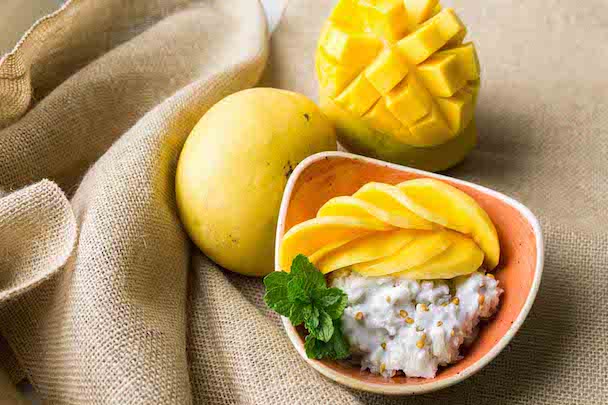
Mango is a large evergreen tree of the Anacardiaceae native to India. Its leaves are leathery and alternate; the flowers are small, heterogeneous, yellow or light yellow, forming a terminal panicle. The mango stone fruit is large, flattened, 5-10 cm long and 3-4.5 cm wide, yellow when mature, sweet in taste, and hardcore.
Mango is one of the famous tropical fruits. The mango fruit contains sugar, protein and crude fiber. The carotene, the precursor of vitamin A, contained in mangoes is particularly high, which is rare among all fruits. Secondly, the vitamin C content is not low. Minerals, proteins, fats, sugars, etc. are also its main nutrients. Mango can be made into juice, jam, canned food, pickled, hot and sour kimchi, mango milk powder, preserves, etc.
Mango Pictures
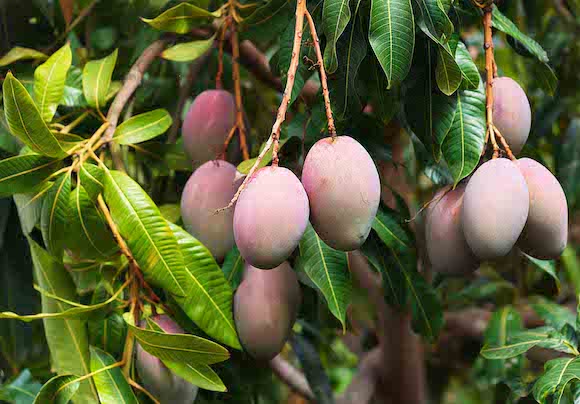
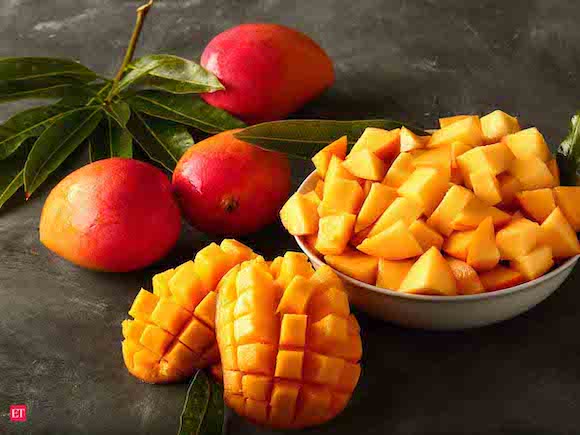
Mango morphological characteristics
Mango is a large evergreen tree with a height of 10-20 meters; the bark is gray-brown, branchlets are brown and hairless. The leaves are thin and leathery, often clustered on the tops of branches. The shape and size of the leaves vary greatly, usually oblong or oblong-lanceolate, 12-30 cm long, 3.5-6.5 cm wide, apex acuminate, long acuminate or Sharp tip, wedge-shaped or nearly round base, wrinkled edges, glabrous, slightly shiny leaf surface, 20-25 pairs of lateral veins, obliquely ascending, protruding on both sides, network veins indistinct, petiole length 2-6 cm, upper mask Groove, swollen base.The panicle is 20-35 cm long, densely multi-flowered, gray-yellow puberulent, branched, and the most basal branch is 6-15 cm long; bracts are lanceolate, about 1.5 mm long, and puberulent. The flower of mango is small, heterogeneous, yellow or light yellow. The peduncle of mango is 1.5-3 mm long, nodular; sepals are ovate-lanceolate, 2.5-3 mm long and 1.5 mm wide, acuminate, puberulent on the outside, with fine eyelashes at the edges; petals oblong or oblong Shape-lanceolate, 3.5-4 mm long, 1.5 mm wide, glabrous, with 3-5 brown protruding veins on the inside, curled out when blooming; the flower disk is enlarged, fleshy, 5-lobed; only 1 stamen Developed, about 2.5 mm long, anthers ovoid, sterile stamens 3-4, with very short filaments and verrucous anther primordia or missing. The ovary of the mango is obliquely ovoid, about 1.5 mm in diameter, glabrous, and the style is nearly terminal, about 2.5 mm long.
Mango growth habit and growing environment and distribution
Growth and development
The branch tip growth habit The mango branch tip grows in a flamboyant manner. The buds are wrapped by bracts. When growing, the bracts open first, the bud tips are elongated, the leaves are expanded, and the bracts fall off. The middle and lower leaves are intergrowth, and the distance between leaves is large. Generally, the seedling stage and young tree of mango are drawn 6-8 times a year, the young fruiting tree is drawn 2-4 times, and the adult tree is 1-2 times. Shoots from March to May are spring shoots, 6-8 and summer shoots, September-November autumn shoots, and December-February winter shoots. In Hainan, autumn shoots are the main fruiting mother branches. However, spring and summer shoots can also become fruiting parent shoots. Under good conditions, winter shoots of certain varieties can also bloom and bear fruit from December to January. It takes 15-35 days for mangoes to mature from the buds to the shoots stop growing. The summer and autumn shoot last shorter, and the winter shoots are longer. The shoot growth and root growth alternate.Flower bud
Flower bud differentiation of mangoes Under normal circumstances, flower bud differentiation of mangoes starts from late October to November. The use of flower stimulants may differentiate at any time. The opening of the first flower from flower bud differentiation to inflorescence lasted 20-39 days, but the inflorescence continued to grow after the first flower opened. Appropriate low temperature and drought are conducive to flower bud differentiation; high temperature is conducive to the formation of bisexual flowers.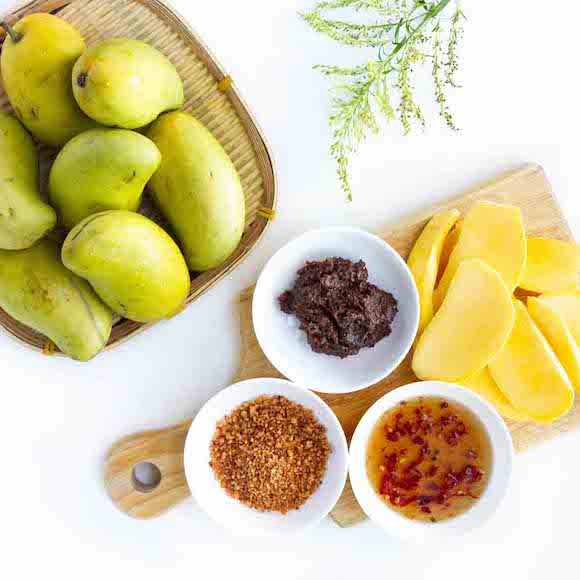
Flowering
Mango trees naturally bloom from December to January-February of the following year, sometimes as early as November or as late as March of the following year. The blooming period is around the Spring Festival. It takes 15-25 days for an inflorescence to open from the first flower to the completion of the entire inflorescence, and the flowering period of a tree is about 50 days. Mango flowers have bisexual flowers and male flowers. The bisexual flowers have normal stamens and pistils, which can be pollinated and fertilized and bear fruit. Male flowers have no pistils and cannot bear fruit after flowering. Most cultivars have more than 15% bisexual flowers. A flower spreads from the petal to the stigma withered for about 1.5 days.Fruit
The fruit of mango develops and blooms. After fertilization, the ovary begins to expand, and it grows rapidly after about 1.5 months. The growth is very slow or does not grow 10-15 days before the fruit is picked. At this time, it is mainly thickening, filling and weight gain. It takes 85-110 days for early-maturing species, 100-120 days for middle-maturing species, and 120-150 days for late-maturing species from flowering and fruiting to green maturity. During fruit development, there are two obvious peaks of fruit dropping: the first time is about two weeks after flowering, mainly due to the poorly fertilized small fruits withered and falling off, and the amount of fruit dropping is large; the second time is 4-7 weeks after flowering, except for small fruits Some are malformed or aborted fruits with poor growth, and more are due to lack of nutrients and water. Physiological fruit drop rarely occurs after 2.5 months after flowering, and only wind damage, fruit cracking, or disease and insect damage will cause fruit drop in 80-85 days. The fruit harvest period is from May to July, depending on the variety and region.Temperature
Mango likes warmth, not cold and frost resistant. The optimum temperature for growth is 25-30℃, slow growth below 20℃, leaves and inflorescences will stop growing below 10℃, and nearly mature fruits will suffer cold damage. The average annual temperature in the world's mango production areas is above 20℃, and the lowest monthly average temperature is above 15℃. The average annual temperature of the production areas in China that can grow normally is 19.8-24.1 ℃, but the annual average temperature is 21-22 ℃, the coldest month is greater than 15 ℃, and most areas are frost-free almost all year round. The effective temperature for mango growth is 18-35℃, the suitable temperature for branch growth is 24-29℃, and the daily average temperature of more than 20℃ is required for fruit setting and young fruit growth.Insufficient temperature, poor pollination and fertilization, and even death of inflorescences or abortion of seed embryos. When the temperature is higher than 37℃, the florets and fruits will produce sunburn. When the temperature is lower than 10℃, the new shoots and flower spikes will stop growing. Below 5℃, the seedlings, tender shoots and flower spikes will be chilled, and the upper ground of the seedlings and adult trees will be affected at around 0℃. The flower spikes, tender shoots, and outer leaves of the flower will be damaged, and wither in severe cases. Young trees below -3℃ freeze to death, and big trees are severely frozen.
Illumination
Mango is a light-loving fruit tree. Adequate light can promote flower bud differentiation, flowering and fruit set, and improve fruit quality and appearance. Usually, a single plant blooms more on the sunny side of the canopy or in an open environment, and the fruit setting rate is high; mangoes with too many branches and leaves, canopy closed, and insufficient light have less flowering and fruit and the appearance and quality of the fruit are poor. It is possible to improve the light conditions in the garden and the trees through shaping and repairing to increase the yield and prolong the abundant production period.Moisture
Mangoes grow well in areas with an annual rainfall of 700-2000 mm. The uneven distribution of annual rainfall in South China often affects growth and development. If the air is too dry during the flowering and early stage of fruiting, it is easy to cause flower and fruit drop; too much rain leads to burnt flowers and poor pollination and fertilization; excessive rainfall in summer often induces serious fruit diseases; autumn drought after harvesting affects the autumn shoots The sprout grows.Soil
Mangoes are not demanding on the soil and can be cultivated in areas below 600 meters above sea level. But the soil is deep, the groundwater level is below 3 meters, the drainage is good, and slightly acid loam or sandy loam is better.Mangoes are produced in Yunnan, Guangxi, Guangdong, Sichuan, Fujian, and Taiwan. They are born in mountain slopes, river valleys, or wilderness forests at an altitude of 200-1350 meters. Distributed in India, Bangladesh, Indochina and Malaysia. This species has been widely cultivated all over the world, and more than 100 varieties have been cultivated, and more than 40 varieties have been cultivated in China.
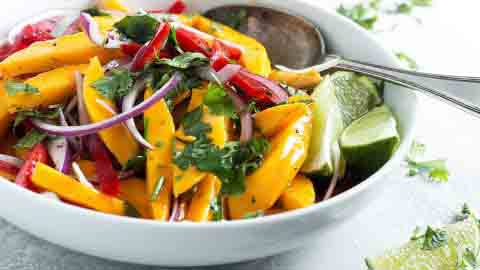
Mango efficacy and role
The economic value of mango
Mango leaves and bark can be used as yellow dyes. The wood is hard and resistant to seawater and is suitable for boats, vehicles, or furniture.Mango can also be made into a variety of processed products, such as syrup slices, jams, juices, compotes, dehydrated mango slices, mangos, and salted or hot and sour mangoes. The leaves can be used as refreshing drinks, and the seeds can extract protein, starch, and fat.
surroundings
The mango tree has a spherical crown, an evergreen tree, and a large canopy closure. It is a good tropical garden and street tree species.
Edible value of mango
The mango fruit is elliptical and smooth, the peel is lemon-yellow, the flesh is delicate, the smell is sweet, it is rich in sugar, vitamins, protein 0.65%-1.31%, carotene per 100g contains 2281-6304 micrograms, soluble solids 14%-24.8% And the content of trace elements (selenium, calcium, phosphorus, potassium, iron, etc.) necessary for the human body is also high.Mango has a high nutritional value. Mango has about 57 calories, and its vitamin A content is as high as 3.8%, which is twice as much as apricots. The content of vitamin C also exceeds that of oranges and strawberries. Every 100 grams of fruit pulp contains 56.4-137.5 mg of vitamin C, and some can be as high as 189 mg; sugar content is 14-16%; mango seeds contain protein 5.6%; fat 16.1%; carbohydrate 69.3%.
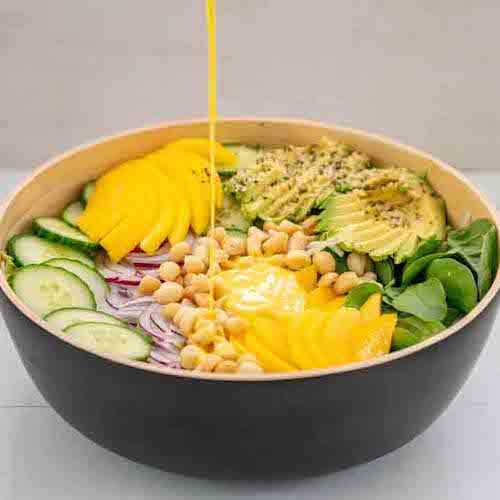
The nutritional value of mango
1. Eating mango has the effect of clearing the intestines and stomach and has a certain antiemetic effect on motion sickness and seasickness.2. Anti-cancer. According to the viewpoint of modern diet therapy, mango contains a lot of vitamin A, so it has anti-cancer and anti-cancer effects.
3. Beautify the skin. Because mangoes contain a lot of vitamins, eating mangoes regularly can moisturize the skin.
4. Prevent hypertension and arteriosclerosis. Mango contains nutrients, vitamin C, minerals, etc. In addition to its anti-cancer effect, it also has a therapeutic effect in preventing arteriosclerosis and high blood pressure.
5. Prevent and treat constipation. The earth mango contains a lot of fiber, which can promote defecation and has certain benefits for preventing and treating constipation.
6. Sterilization. The extract of mango leaves can inhibit Pseudococcus, Escherichia coli and Pseudomonas aeruginosa. At the same time, it also has the effect of inhibiting the influenza virus.
Mango cultivation
Mango reproduction methods can be divided into two types: sexual reproduction and asexual reproduction. Sexual reproduction is the use of seeds for sowing and reproduction. The seedlings that are reproduced are generally called baosheng seedlings. Asexual reproduction includes grafting, aerial layering and cuttings, etc. The grafting method is generally used.Sexual reproduction
Selection of nursery
Choose a flat or gentle slope that is relatively flat, sunny and sheltered from the wind. The soil is preferably sandy loam with a deep soil layer and good drainage and rich in organic matter. The mango nursery should pay attention to drainage when it is reorganized because the mango seedlings in the nursery period are very afraid of soaking. If the mango seedlings are soaked for many days, it is easy to cause the mango seedlings to grow poorly or die. According to the fertility of the soil, it is necessary to apply decomposed organic fertilizers and superphosphate as base fertilizer when refurbishing.Germination, seeding
The best sowing period in Hainan Province is the mango ripening season from June to July. Because the seeds are fresh, the source is easy, and the time is high temperature and humidity, the survival rate after sowing is high. The choice of seeds is to have a full seed core. When sowing, you can choose seeds from fresh food to about 20 days, and just wash the remaining meat and dry it in the shade. Before planting, the shell must be peeled. During operation, the end of the seed nucleus can be clamped by the shearing clip and turned down along the suture to tear one side of the seed shell, and then tear the other side. The larger the gap, the easier it is to remove The germ kernel in the seed nucleus, but should try not to damage the germ kernel, if occasionally hurt a little, it will not damage its germination and development. Because the mango seed has a hard outer seed coat (husk) which affects germination, remove the outer 2 cm of seed coat and cover soil can effectively increase the germination rate.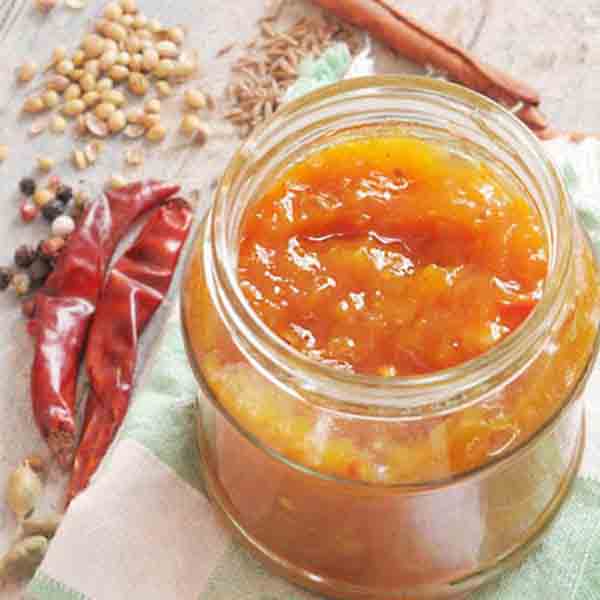
Asexual reproduction
Mango grafting can be used for mass propagation of good seedlings and used to renew good varieties of planted orchards. Grafting is asexual, not easy to mutate, and can maintain the excellent characteristics of the mango female parent. Inbreeding, as long as a new excellent variety is bred, the grafting method can be used for large-scale reproduction, such as the existing American varieties, Jinhuang No. 1, Training Number one etc. There are many methods of grafting, but the cutting method is generally simpler and faster for grafting mangoes. For varieties that are not easy to be grafted, such as Tainong No.1, the grafting method is occasionally used, but it is more troublesome. The grafting of mango, due to the different graft compatibility of the mango plant itself and the amount of tannin content, makes different varieties have different grafting rates on the same rootstock. The main factors affecting the survival of grafting are the visual strength of the rootstock and scion. The so-called affinity refers to the ability of the rootstock to combine in terms of internal tissue structure, physiology, and genetics of the scion. The higher the affinity, the higher the survival rate of grafting.Latest Updated
- Benefits of Bugleweed - 7 Science-backed Health Benefits
- Bugleweed Dangers & Side Effects - Is It Poisonous?
- How to Plant Evergreen Trees - What You Should Know
- When to Plant Evergreens - Grow Guide for Evergreen Trees
- 12 Wonderful Evergreen Shrubs for Your Garden
- 12 Popular Evergreen Plants with Pictures for Beginners
- When And How To Prune A Lilac Bush Like a Pro
- How to Grow & Care for Lilac Vine (Hardenbergia Violacea)
- Japanese Lilac Tree (Syringa Reticulata) Care & Propagation Guide
- Shumard Oak Pros and Cons - What to Know
Popular Articles
- Winter maintenance of Antirrhinum Majus
- How to Grow Terminalia Mantaly Tree
- How to Grow and Care for Crossostephium Chinense
- How to grow Antirrhinum Majus in spring
- Peristeria Elata (Dove Orchid) Profile: Info & Care Guide
- Underwatered Snake Plant (Sansevieria Trifasciata) - Signs And How To Fix
- How to Care for Brazilian Jasmine Plant (Mandevilla Sanderi)
- How to Grow & Care for Graptopetalum Purple Delight in Summer
- Rosa Chinensis (China Rose): Plant Growing & Care Tips
- How to Care for Baby Sun Rose (Aptenia Cordifolia)